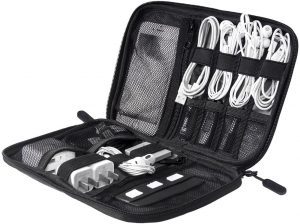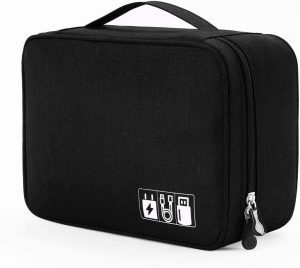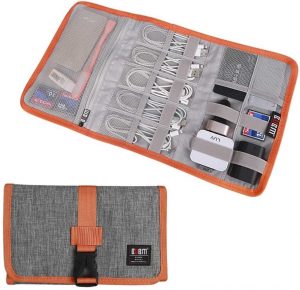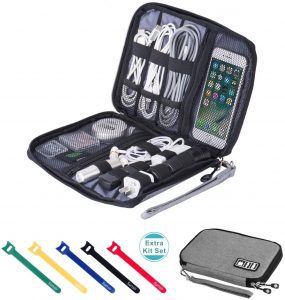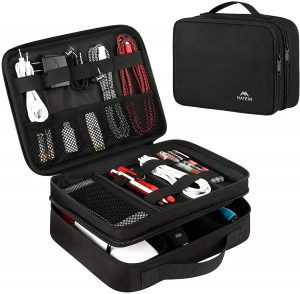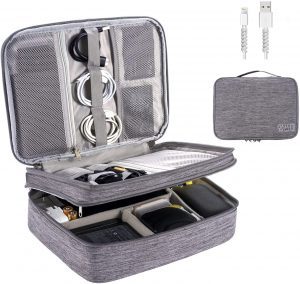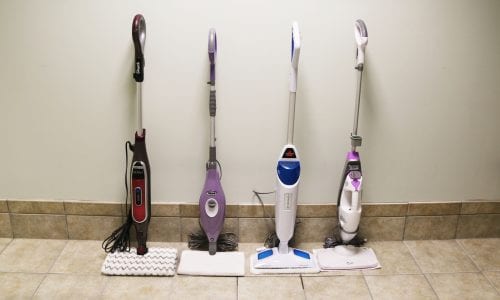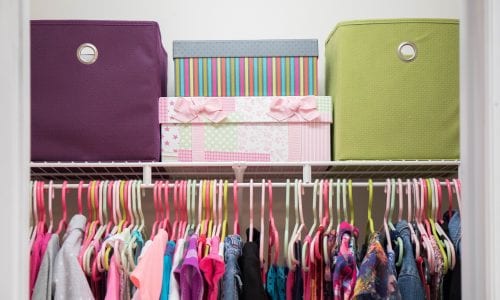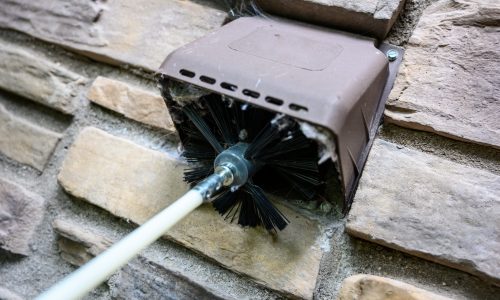The Best Cable Organizer Bags & Cases

Our Review Process
Don't Waste Your Money is focused on helping you make the best purchasing decision. Our team of experts spends hundreds of hours analyzing, testing, and researching products so you don't have to. Learn more.
Our Picks For The Top Cable Organizer Bags & Cases
- 1. BAGSMART Lightweight Water Repellent Nylon Cable Organizer Bag
- 2. GONGZHU Adjustable Padded Dividers Cable Organizer Bag
- 3. BUBM Scratch Resistant & Waterproof Nylon Cable Organizer Bag
- 4. Sunsir Zipper Closure Polyurethane Cable Organizer Bag
- 5. MATEIN Dual Padded Compartments Cable Organizer Bag
- 6. OrgaWise Removable Hook & Loop Dividers Cable Organizer Bag
If you want a compact organizer bag for being on the go, this nylon option features plenty of pockets and elastic holders. It has a place to put your phone as well as special slots for memory cards. The hard case repels water and is lightweight.
Holds the BasicsDespite its compact size, this travel-friendly option offers a variety of storage options you'll find useful.
Especially handy for large collections, this padded bag with a 3.5-inch height has dividers to set up compartments in any size. You also get top pockets for cables. It comes in single- or double-layer styles and different colors.
Allows for CustomizationThis bag's customizable compartments and large size make it good for storing both cables and small gadgets.
This durable organizer opens flat to reveal numerous pockets, including one large zippered mesh one, and elastic holders. The nylon material is waterproof, and you can choose from a number of different colors. A latch keeps it closed.
Tidy StorageWant something that's compact with compartments for sophisticated organization? Consider this bag.
Available in six colors, this small, thin, zippered case has a strap that makes it easy to carry. You get a variety of pockets and elastic holders inside. It comes with bonus plastic ties to wrap around your cables.
Comes With ExtrasThis compact case offers enough space for the essentials and includes some plastic ties for wrapping.
Buying Guide
Since you can easily end up with a large collection of cables for devices such as phones, tablets, cameras and gaming consoles, finding a way to organize them is crucial. Not only do you want to avoid having your cables get lost around the home, but you also want to prevent tangles and damage. Cable organizer bags and cases offer a good solution since they provide a safe place for storage and make it easier to find what you need.
Taking a look at your cable collection will give you an idea of how big a case you need. A large organizer offers the most flexibility for current and future cables, but takes up more space and is less portable. Therefore, you might opt for a bigger one for storing cables at home. Then, you can get something smaller and lighter to hold just a few essential cables when you travel. You can also compromise with a medium-sized bag or case.
Along with selecting the right size, consider how many and what kinds of compartments you get with a specific bag or case. You’ll want to make sure there are enough compartments for all the cables you want to store and that they’re big enough. Common compartment types include elastic loops, zippered mesh pockets, open pockets and special holders for items such as memory cards and tablet pencils.
Larger cable organizer bags tend to allow you to store a wide variety of items and might even have dividers you can move around as you see fit. You’ll usually have large pockets inside these kinds of bags, and they can handle phones and small tablets along with cables and chargers. In addition, you may still get plenty of elastic holders and mesh pockets to secure smaller items.
Compact cable organizer cases usually focus on compartments that fit small items such as cables and memory cards. These organizers often have a latch on the front or zipper and may open up flat. While you’ll find plenty of specialty pockets with such cases, you won’t get much open space like with larger bags. However, these cases may still offer a space big enough to fit a phone or computer mouse.
Consider how easy your cable organizer is to carry around. Traditional bags usually have a handle, but this isn’t always the case with small cable organizers, which can be easily stashed in a backpack. For your convenience, you may want to look for something that has a carrying strap.
What to Look For
- If you have long cables, you can find it hard to properly wrap them up for storage. That’s where plastic zip ties can come in handy, and some organizers might even give you a few. Single-use zip ties usually need cutting to release your cable, so these are better for cables you don’t use often. You can also find reusable zip ties for frequently-used cables.
- Be careful when placing your cables inside the organizer bag or case. You never want to force a cable into a small compartment, since this can damage it. In addition, take care when using zip ties: avoid tightening it so much that it causes stress on the cable.
- Keep your unused cables properly stored away for as long as possible to get the best results with your cable organizer bag or case.
- When taking a cable out of the organizer, inspect it before use. Check especially for fraying: using a frayed cable can harm your device or even cause a fire. If in doubt, don’t risk it — replace the cable.
- To reduce the chance of your cables getting damaged, consider putting special protectors around delicate items before storing them. These work well with headphones or phone charging cables that get used a lot.
- If you plan to carry your cable organizer bag or pouch outside, look for one that is either waterproof or water-resistant. For extra protection, put the organizer inside a backpack, briefcase or even a plastic bag when going out.
- Look for a bag with good padding, especially if you’ll be storing fragile items.
- Once you have your cable organizer, you’ll want to figure out the best use for each compartment. Some will have obvious special uses, and others can be used based on your personal preference. You’ll generally get small mesh pockets, large pockets and zippered pockets that are great for things that might slip out. Elastic bands work well for wrapped cables.
More to Explore
Today, cables seem ubiquitous—we have so many different kinds cluttering up our homes, from power cables to ethernet and landline telephone cables, In the course of human development, though, this proliferation is a relatively new development. The first cables were laid as part of the transatlantic telegraph system starting in the 1850s, although it took some experimentation to find materials that worked effectively to transmit Morse code signals 40 miles or more.
The first cables, made from iron, were difficult to produce. Then, copper sulphate was added as a coating, and found to be conductive enough that it eventually replaced iron altogether. By 1913, copper had become the benchmark for conductivity in electric cables. In the 1980s, companies like Xerox, Intel and DEC started developing the first network cables.
Today, our cables tend to contain at least a neutral wire, ground wire and hot wire, possibly color-coded, twisted and bonded together and encased in a thin outer sheath made from PVC. The term is usually interchangeable with “wires,” but wires consist of one electrical conductor while cables have multiple conductors.

